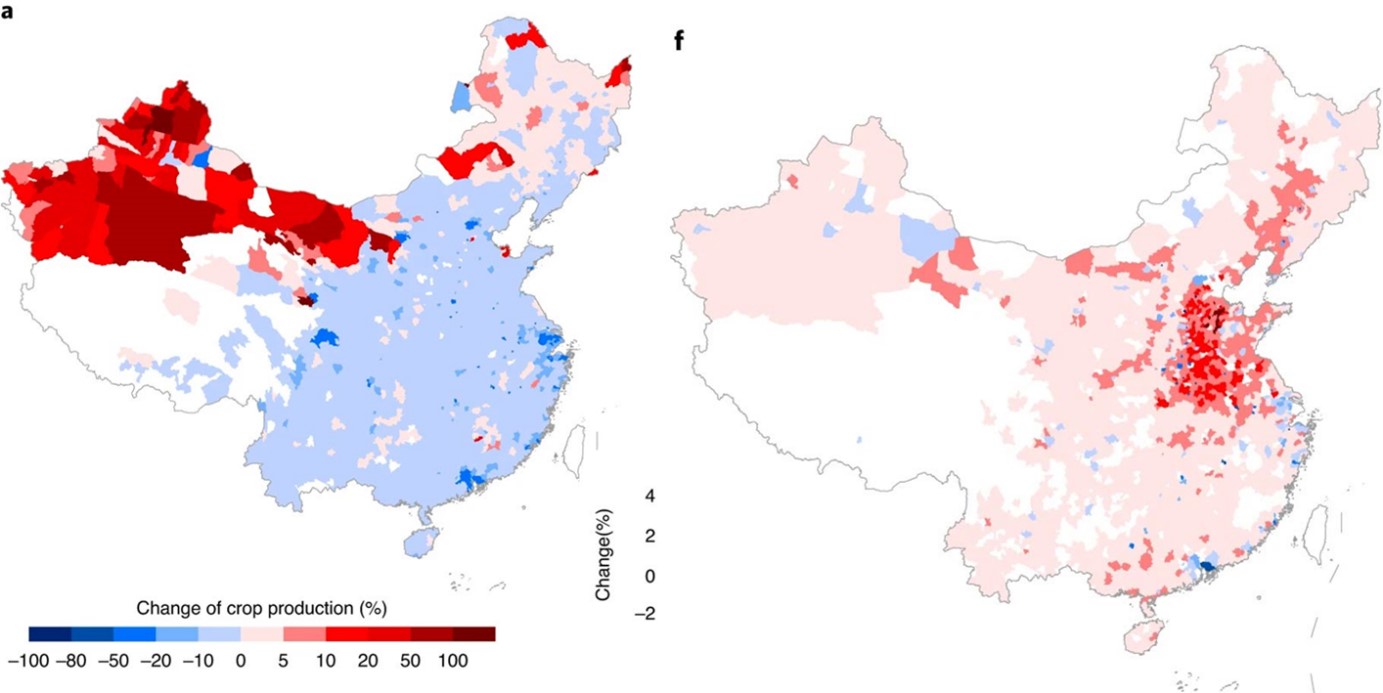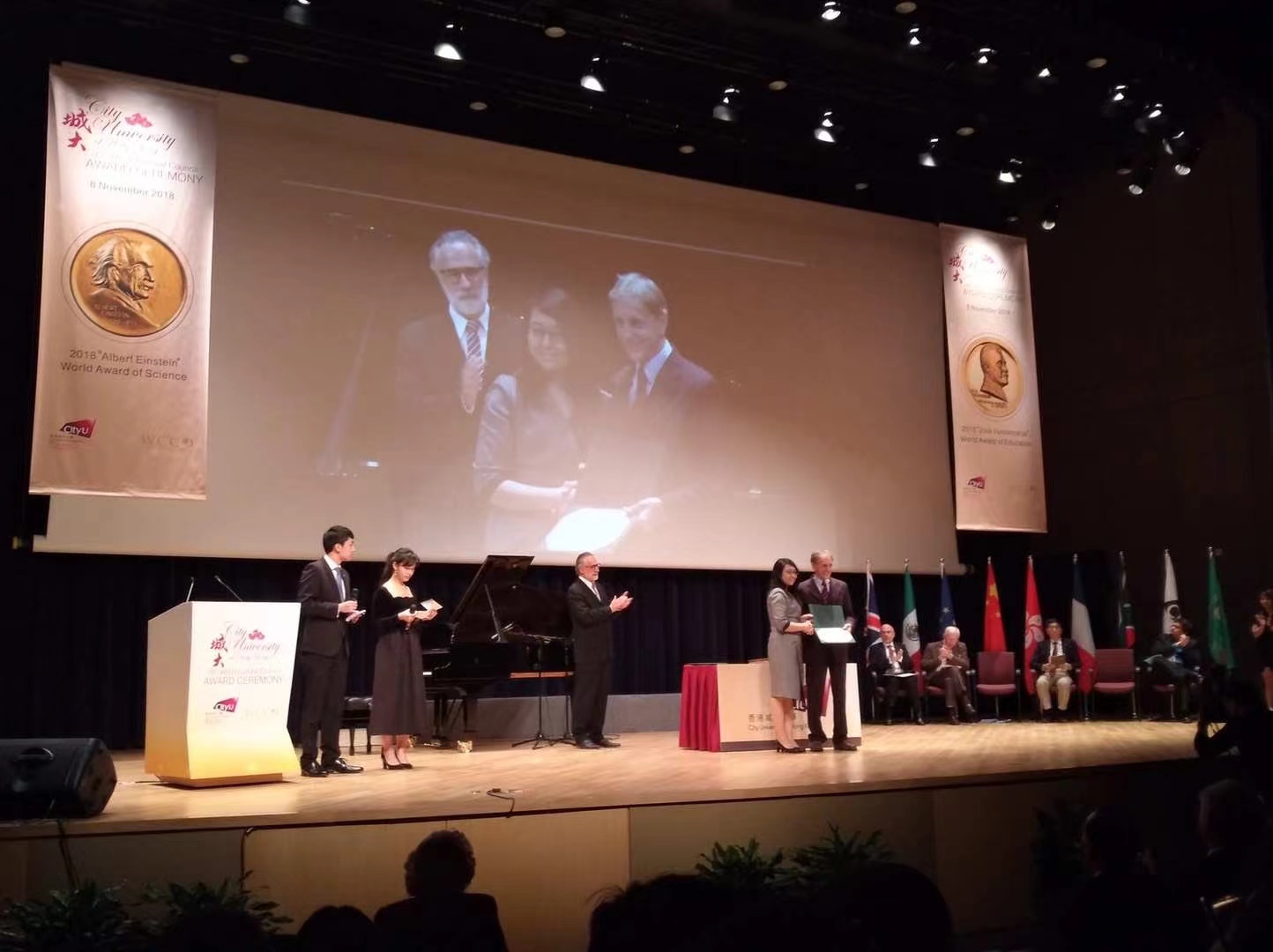New study reveals how China’s urbanisation can release croplands and improve its food security
Urbanisation has always been considered a threat to food security since it swallows up equivalent areas of croplands. However, a new study carried out by a team of researchers from City University of Hong Kong (CityU), Zhejiang University, and other institutes has shown that urbanisation, croplands protection, and food security can co-exist in mainland China. Counterintuitively, urbanisation has the potential to actually release lands for crop production, benefiting agricultural production with large-scale farming.
Their findings are published in the academic journal Nature Food, entitled “Urbanization can benefit agricultural production with large-scale farming in China”. Professor Zhang Xiaoling from CityU’s Department of Public Policy is one of the co-first authors of the research, which was led by a scholar from Zhejiang University.
There is a growing concern that the arable land area suitable for farming worldwide is shrinking due to the current spread of urbanisation around the globe in the form of expanding cities. To investigate the “urbanisation vs. agricultural production” debate, the research team has carried out an exhaustive analysis and quantified the impact of urban expansion and rural land reclamation on crop production. Their discovery contradicted the conventional perception and showed that urbanisation has the potential to release lands for crop production in mainland China!
Urbanisation “releases” croplands

Using spatial statistics and scenario analysis, the research team estimated a projected increase in mainland China’s urbanisation level from 56% in 2015 to 80% in 2050, while at the same time, 5.8 million hectares of rural land - equivalent to 4.1% of the total cropland area in 2015 - could be released for agricultural production. These released croplands would most likely be concentrated in the North China Plain, Middle and Lower Yangtze River Plain, and Northeast China Plain.
Even if these “new croplands” were of relatively lower land fertility at first, the team projected that crop production in 2030 and 2050 would still be 1.4% and 3.1% higher, respectively, than in 2015.
Their projection results showed that urbanisation has the potential to release lands. Moreover, due to the reduction in rural population, and the greatly reduced farmland fragmentation, opened the door to the development of large-scale agriculture and environmental protection. For this to happen, the research team believed that a coordinated approach in planning urban and rural development is needed, together with the reclamation of abandoned rural construction land.
Mismatch between labour flow and land resources
The team pointed out that actually in 2015, although mainland China’s rural population was 20% less than its urban population, the built-up area of human settlement was 160% more in rural areas, and these lands have the potential to be released. Under the restriction of the Hukou system (mainland China’s system of household registration), although the migrant workers work in the city, since they do not have urban “hukou”, they do not have equal access to public services as urban residents do. They are largely excluded from purchasing a house, their children’s right of receiving education is not protected, and they do not have medical insurance. Therefore, migrant workers are usually unwilling to abandon their rural homestead and would prefer to use the money they earn from urban areas to build new houses in rural areas. It meant that a single person would “occupy” two places.

The team believed that urban development, accompanied by rural-to-urban migrants settling in and being accepted and integrated into cities, would eliminate the need for migrant workers to keep their rural housing, which will help to optimise the allocation of land resources and labour, as well as maximise land use efficiency in both urban and rural areas.
The research also found that the current average farm size of rural households is only 0.5 hectares, but this value could reach 1.35 hectares along with urbanisation. An increase in the scale of farmland increases farmers’ income and reduce the use of fertilisers and pesticides, thus helping to protect the environment.
Feasibility of rural land release
Although rural land reclamation is feasible, the team pointed out that the premise of rural reclamation is that farmers can exchange their rural settlements and croplands for being granted access to public services such as medical and social insurance resources in urban areas. However, this is not always possible under mainland China’s current residential registration system. Moreover, adequate compensation and incentives are needed to induce farmers to voluntarily withdraw from residential land.
The team believe that the new finding of the co-existence of urbanisation and agricultural production could guide future cropland protection and food security initiative for global regions undergoing rapid urbanisation. “Urbanisation and food security should be achieved at the same time, to feed and settle the increasing global population. To achieve such a ‘win-win’ outcome, inefficient cropland and unused rural land need to be reclaimed and consolidated. Moreover, social and economic security nets are needed for both land-lost farmers in villages and migrant rural workers in cities,” concluded Professor Zhang.

The corresponding author of the paper is Dr Gu Baojing from Zhejiang University. Professor Zhang, Wang Sitong, a PhD student from Zhejiang University, as well as Professor Bai Xuemei, Distinguished Professor from the Australian National University are all first authors. The other co-authors are from the UK’s Centre for Ecology & Hydrology and The University of Melbourne.
The research is funded by the National Natural Science Foundation of China, the National Key Research and Development Project of China, the Australian Research Council, and the UK Natural Environment Research Council.
DOI number: 10.1038/s43016-021-00228-6